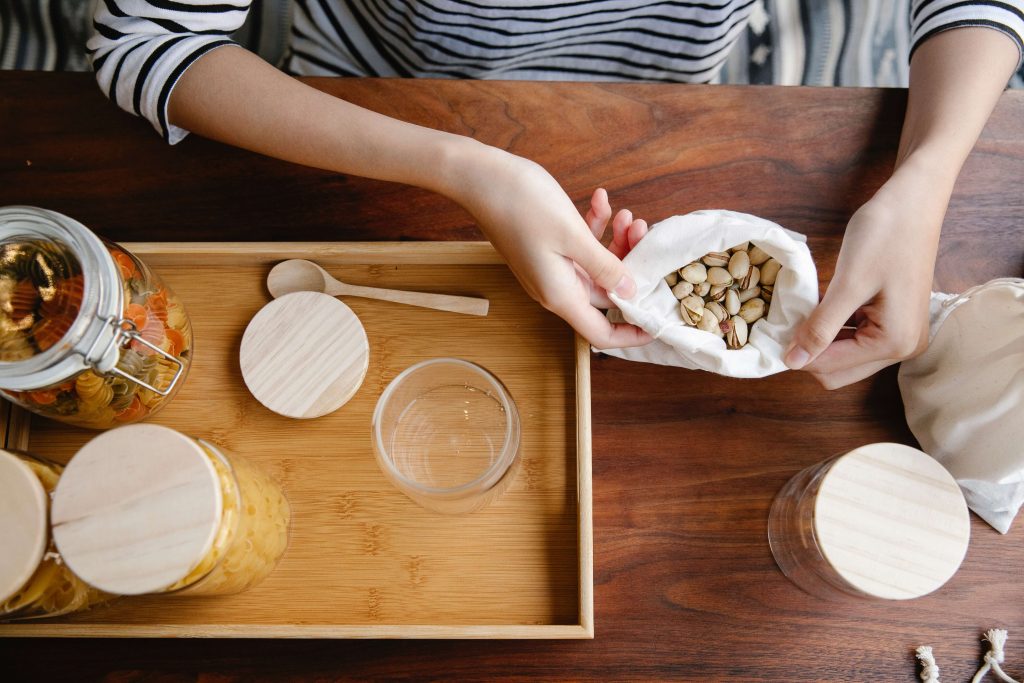The kitchen is the heart of the home – a place where friends and family can gather to prepare and enjoy delicious home-cooked meals together. But where there’s creation, often comes waste. So to ensure this special place remains one of joy and sustainability, we’ve put together a list of tips on how to create a sustainable green kitchen.
Meal planning and bulk buying
Plan your meals in advance to reduce food waste and unnecessary purchases. This will also help you buy only what you need, saving money and reducing the environmental impact of food production. Purchase pantry staples like grains, legumes, nuts, and spices in bulk to reduce packaging waste. Using reusable containers or cloth bags to store these items is essential to create a sustainable green kitchen.
Homemade cleaners and green cleaning supplies
Make your own cleaning products using natural and non-toxic ingredients like vinegar, baking soda, and essential oils. This reduces your exposure to chemicals and minimises packaging waste. Choose eco-friendly dishwashing detergents and cleaning supplies to minimise water pollution and reduce your exposure to harmful chemicals.
Reusable water bottles, coffee cups and double-duty appliances
Use a reusable water bottle and coffee cup to avoid single-use plastic containers when you’re on the go. Invest in appliances that serve multiple purposes, like a blender that can also make soups or a toaster oven that can function as a mini oven. Get creative with repurposing items for new uses. For example, use mason jars as drinking glasses, or old baking sheets as trays.
Read more: Conscious cooks: A sustainable food trend that’s here to stay
Zero-waste and energy-saving cooking
Get creative with your cooking to use up all parts of the ingredients. For example, use vegetable peels for stocks, make fruit scraps into jams, and repurpose leftovers into new dishes. Opt for energy-efficient cooking methods such as steaming, microwaving, or pressure cooking, which use less energy and retain more nutrients compared to boiling or frying.
Proper refrigeration and composting
If you have outdoor space, start a compost pile for food scraps and yard waste to create nutrient-rich soil for your garden. Set your refrigerator and freezer to the right temperatures to ensure food safety while minimising energy consumption.
Remember, the key to creating a more sustainable green kitchen is to adopt a mindset of conscious consumption, waste reduction, and resource conservation. Start by implementing a few of these tips and gradually incorporate more as you continue on your journey towards a greener lifestyle.
ALSO SEE: Locally made sustainable products for your home
Written by Maegan-Leigh Jacobs
Feature image: Pexels

